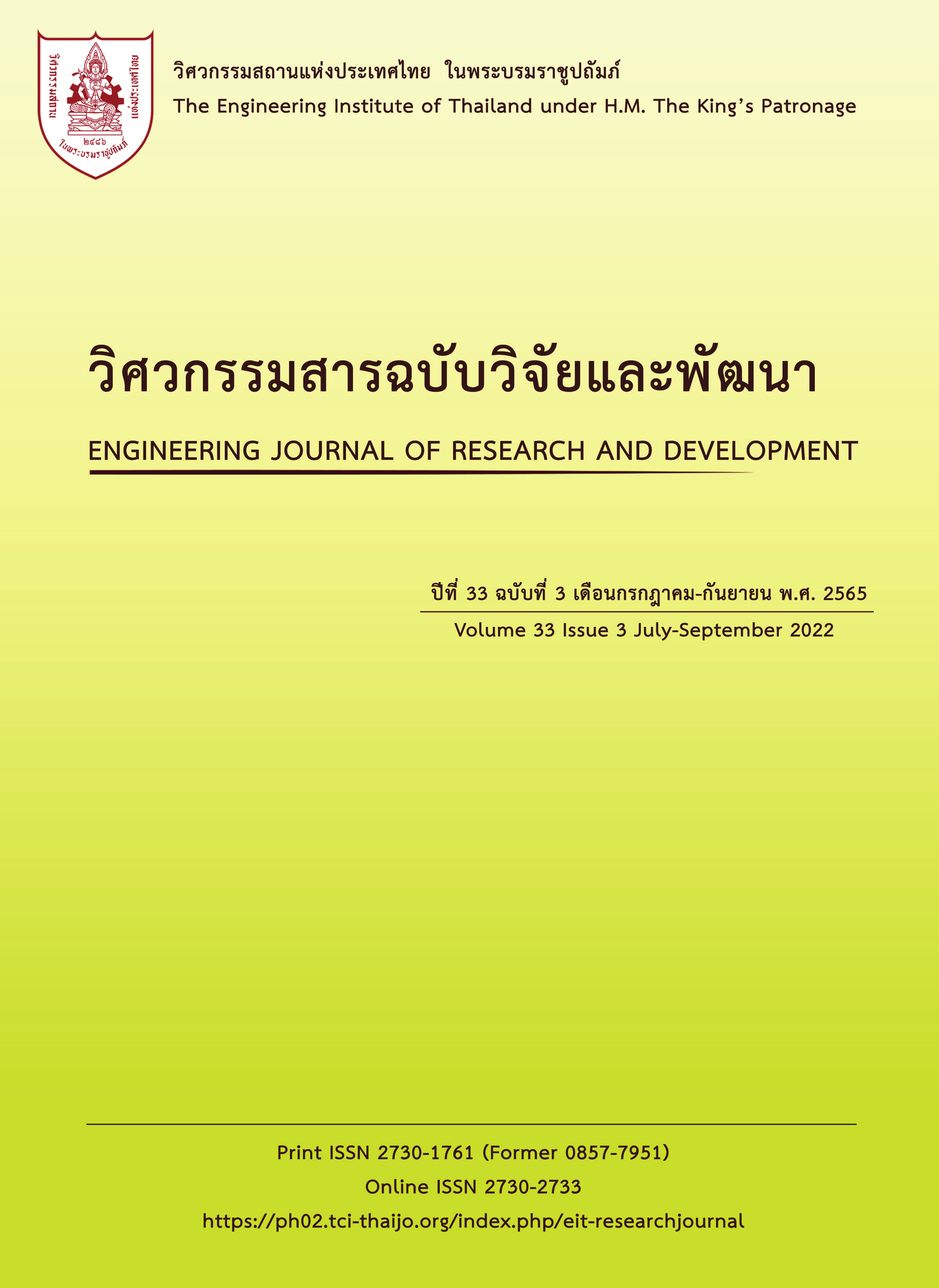INVESTIGATION OF ADSORPTION EFFICIENCY OF ORTHOPHOSPHATE AND AMMONIUM IN SOLUTION AND WASTEWATER BY TEA RESIDUE AND TEA RESIDUE CHARCOAL
Main Article Content
Abstract
Eutrophication is an environmental problem from nitrogen and phosphorus nutrients enrichment in water resources since it results in a deterioration of water quality. The major cause is the anthropogenic activities. This research aimed to study the ability of tea residue for the nitrogen and phosphorus nutrients adsorption in the aqueous solution. The study investigated the experiment of adsorption under various conditions including the concentration of orthophosphate and ammonium, pH, quantity of adsorbent and the appropriate contact time. The results showed the optimum conditions for orthophosphate and ammonium adsorption at concentrations 20 mg/L, pH 9 and 60 minutes of contact times which were used 1 gram of each 3 types of adsorbents (tea residue, tea residue charcoal, and granular tea residue charcoal). The kinetics modeling of all adsorption of tea adsorption dynamic was well described by Pseudo-second order model. The orthophosphate and ammonium adsorption isotherm of tea residue and tea residue charcoal were consistent with the Freundlich isotherm and granular tea residue charcoal was consistent with Langmuir isotherm. Moreover, the 3 types of adsorbents promoted the high removal performance of orthophosphate and ammonium in domestic wastewater and swine farm wastewater.
Article Details

This work is licensed under a Creative Commons Attribution-NonCommercial-NoDerivatives 4.0 International License.
The published articles are copyright of the Engineering Journal of Research and Development, The Engineering Institute of Thailand Under H.M. The King's Patronage (EIT).
References
[2] Chatasuda k and Suratsawadee K. Adsorption of Disperse Dyes from Wastewater Using Cationic. KKU Research Journal, 177-178.2563.[Thai]
[3] Nisaphon M, Sompop P, Ubon T and Piyasiri S. Adsorptive Removal of Textile Dye by Spent Tea Leaves. Yala: Yala Rajabhat University.2559.[Thai]
[4] Supawedee N and Somsakun R. Improvement of Adsorbent from Water Supply Sludge System for Phosphate Adsorption. KKU Science Journal.2016.[Thai]
[5] Onuma P, Thodsaphon P and Sanguan V. Study on characteristic of activated carbon prepared from tae residue and utilization . Phranakhon Rajabhat Research Journal.2018.[Thai]
[6] Sopha R. Adsorption of Ammonia from Domestic Wastewater Phetchaburi Municipal by Using Rice Husk Ash and Commercial Bituminous Carbon. Bangkok: Kasetsart University.2555.[Thai]
[7] Pornsuparat S, Phatthraporn E and Kowit P. Kinetics and Mechanism Adsorption of Direct Red 80 Dye by Modifed Bagasse. King Mongkut's University of Technology North Bangkok[Thai].
[8] Sudarat S, Chaiyot C, Pakit K and Wina R. Biosorption of Copper(II) using Fibroin from Cocoon Waste. Journal of Science and Technology, 53-55.2558.[Thai]
[9] Kanokwan S and Kannitha K. Efficiency of Dye Adsorption From Silk Dyeing Wastewater by Ferricchloride Coated With Bituminous Bottom Ash. KKU RESEARCH JOURNAL, 55-57.2017.[Thai]


